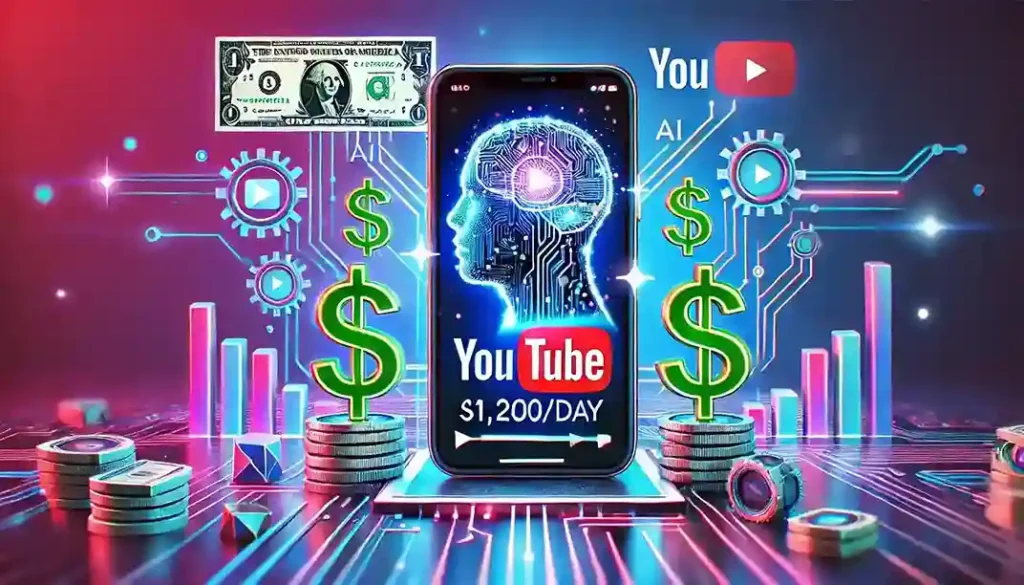Introduction
One day, I wonder if in this world somewhere, your favourite social media personality isn’t real. Sounds futuristic, right? The future has arrived, and it’s invading my digital screens. Social media is exploding with virtual influencers: computer generated characters with the help of artificial intelligence. These AI avatars never tire, never age, they’re always on brand. That makes them unlike human influencers. How, exactly, do they make it? It could also be asked: How do you take advantage of this trend to make money?
In this article we’ll break down virtual influencers, how they work, why brands are using them, and how you can do it too and start making money by building your own AI avatar. Let’s dive in!
What Are Virtual Influencers?
Virtual influencers are digital avatars that exist as graphics and artificial intelligence. They are actual people who look and act like real people having their own personalities, styles and even backstory. With these AI avatars, these can post photos, videos and just like human influencers, can have conversations with their followers. Lil Miquela, Shudu Gram, and Imma are just some of the most famous virtual influencers.
Control is the key difference between virtual and human influencers. This means brands can actually fully script what these digital characters say and do and that they will align perfectly with marketing strategy. Additionally, they don’t have the same achilles heels as a human being, no physical fatigue, the drama of hand in life and no age contraction.
How Virtual Influencers Operate?
A Character Design Designers designs a virtual avatar using 3D software, being very scrupulous about things like facial details, clothing details, and accessories.
- Character DesignThese avatars are with functions of Artificial Intelligence Integration (AI algorithms) that makes them learn, interact and respond to followers. Indeed, some virtual influencers actually use machine learning for captions or replies.
- Artificial Intelligence IntegrationAs with human influencers, virtual influencers share images and videos. These tend to be staged scenes that, at least, look realistic, good lighting schemes, and beautiful backgrounds.
- Content Creation The avatar’s social media management: A team of marketers takes responsibility for their avatar’s social media presence, keeping the avatar engaged with followers in a consistent way.
- Social Media Management A team of marketers manages the avatar’s social media presence, ensuring consistent engagement with followers.
In what ways are Virtual Influencers generating income?
So virtual influencers have turned from being a side hustle to a lucrative business for creators and brands alike. Here are some of the primary ways they generate income:
1. Brand Endorsement and Advertising
As with human influencers, virtual influencers partner with brands to market products and services. Since those AI avatars are 100% master, brands can guarantee that they reflect the image of the influencer according to the brand values. Lil Miquela has even used a major designer like Prada and Calvin Klein.
2. Merchandising
Next, some virtual influencers go into their own merchandise lines, offering clothing, accessories or even digital collectibles. Fans are ready to purchase these products because they already have a loyal following.
3. Digital Presence: Events and Apperances
In addition, virtual influencers can also attend virtual events, live streams, and even metaphors such as virtual meet and greets. These events are also sponsored by some brands which serve as another revenue stream for the same instead.
4. Content Monetization
And on platforms like YouTube and TikTok there are different ways to monetize, such as ads, donations, and paid subscriptions for example. Therefore, virtual influencers can use these features by posting regular engaging content.
5. NFTs (Non-Fungible Tokens)
With the rise of blockchains, many virtual influencers have dabbled in the NFT space. Digital artists create and sell unique digital art or collectibles that can generate millions.
Where and How to Build Your Own Virtual Influencer
While it might seem like creating a virtual influencer would be a difficult task, it’s becoming more and more possible with the help of advanced tools and software. Here’s a simple roadmap to get started:
Step 1: Choose a Niche
Before you even get started designing your virtual influencer, think about what niche he’ll be in. What will your avatar be a fashionista, tech geek, or fitness guru? It helps you focus on a single segment of an audience that helps you collaborate better with brands that resonate with your niche audience.
Step 2: Design the Avatar
I will use 3D modeling software such as Blender, Maya or even DAZ 3D to make your avatar. Make it unique and appeal to it as much as possible. Also, if 3D Designing is new to you then you can use read made templates.
Step 3: Create a Personality and a History
A virtual influencer has to feel like a real one to their audience. Give your avatar a backstory and a personality, that is, differentiate your gif friend from the rest. This helps in connection emotionally and increasing engagement.
Step 4: Create Content
Begin making high quality photos and video featuring your avatar. Throw in realistic background and lighting to make it work. Once you get consistent with posting, you will develop loyal followers.
Step 5: Engage with Followers
Interacting is important to construct a solid virtual influencer. Comment on certain posts, ask questions, create polls, answer Q&As etc.
Step 6: Monetize
From a large following start reaching to brands to collaborate. Also, not only can you explore other ways to monetize such as selling merchandise, but NFTs is also another great way to monetize your experience.
The purpose of this work is to outline major challenges and ethical issues.
While virtual influencers offer exciting opportunities, they also come with challenges and ethical concerns:
- Authenticity: There’s the risk that some users will be continually disconnected from or deceived by the virtual influencers because they aren’t real.
- Oversaturation:The more virtual influencers that come into play, it may be harder to only stand out.
- Ethical Marketing: Such virtual influencers may be easily used by brands in promotions without misleading consumers if these brands are transparent.
However, these assertion do not stop and growth in this space is by no means impossible.
Conclusion
Virtual influencers are rising, and this is the next digital marketing and social media era. Founded on a platform built using tokenomics, these AI avatars can ensure creativity, brand collaboration and income generation, which are indeed endless. Virtual influencers offer a unique opportunity whether you are a brand aiming to tap into a new audience and grow or you a creator seeking new and innovative ways to kickstart your career and make money.
If you’re interested in this trend, now is a great time to get in on the action. If you had the right tools, strategy and creativity, you could be the next virtual influencer big name!
FAQs
1. What is a virtual influencer?
First coined in 2018, virtual influencers are computer generated characters that are powered by AI and do things that a human influencer would do on social media platforms, all from a computer screen.
2. How do virtual influencers make money?
Brand partnerships, merchandising, digital events, content monetization and selling NFT’s is how they make money.
3. Can anyone create a virtual influencer?
Absolutely, anyone can create a virtual influencer if they have the right tools and skill. There is much software and numerous resources available online to help those starting out.
4. Are virtual influencers replacing human influencers?
Not entirely. While virtual influencers present, they have their special benefits, but human influencers have an edge when it comes to authenticity and an emotional connection.
5. What are the ethical concerns around virtual influencers?
These also have some issues when it comes to ethics such as: authenticity, marketing transparency and the possibility of misleading audiences.
6. Is it expensive to create a virtual influencer?
The price is based on how detailed or realistic you want it. You can generate basic avatars with free tools but there may be professional software and expertise needed for the really high end models.
7. What are some famous virtual influencers?
Lil Miquela, Shudu Gram, Imma, Noonoouri, are popular virtual influencers.


